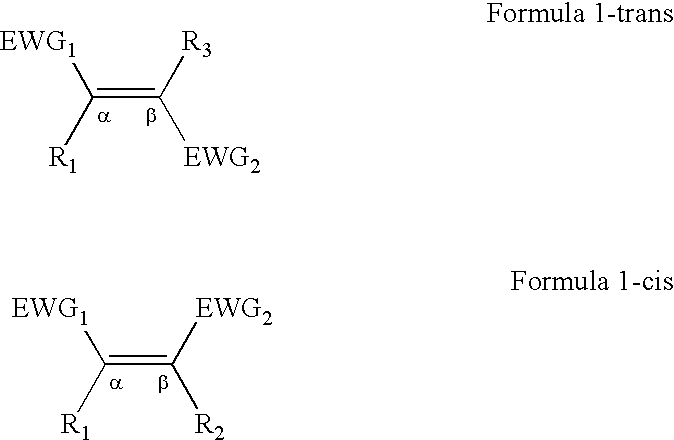Asymmetric cyclopropanation of electron-deficient olefins with diazo reagents
- Summary
- Abstract
- Description
- Claims
- Application Information
AI Technical Summary
Benefits of technology
Problems solved by technology
Method used
Image
Examples
examples
[0054]Previous studies on asymmetric cyclopropanation of styrene derivatives revealed that a [Co(1)]-based system seemed insensitive to substrate electronics. (Huang et al, J. Org. Chem. 2003, 68, 8179; Chen et al., J. Am. Chem. Soc. 2004, 126, 14718; and Chen Y., Zhang, X. P., J. Org. Chem. 2007, 72, 5931.) Even the extremely electron-deficient pentafluorostyrene could be cyclopropanated. (Chen Y., Zhang, X. P., J. Org. Chem. 2007, 72, 5931.) This result prompted us to evaluate the catalytic reactivity of [Co(1)] toward more challenging substrates such as electron-deficient non-styrene olefins (Table 1). Under the one-pot protocol where olefins are the limiting reagent, using 1 mol % [Co(1)] in the presence of 0.5 equivalents of DMAP could effectively cyclopropanate both acrylates and methacrylates with EDA or tert-butyl diazoacetate (t-BDA) at room temperature in toluene, forming the corresponding 1,2-cyclopropanediesters in good yields and high diastereo- as well as enantio-selec...
PUM
| Property | Measurement | Unit |
|---|---|---|
| Fraction | aaaaa | aaaaa |
| Fraction | aaaaa | aaaaa |
| Fraction | aaaaa | aaaaa |
Abstract
Description
Claims
Application Information
 Login to View More
Login to View More - R&D
- Intellectual Property
- Life Sciences
- Materials
- Tech Scout
- Unparalleled Data Quality
- Higher Quality Content
- 60% Fewer Hallucinations
Browse by: Latest US Patents, China's latest patents, Technical Efficacy Thesaurus, Application Domain, Technology Topic, Popular Technical Reports.
© 2025 PatSnap. All rights reserved.Legal|Privacy policy|Modern Slavery Act Transparency Statement|Sitemap|About US| Contact US: help@patsnap.com



